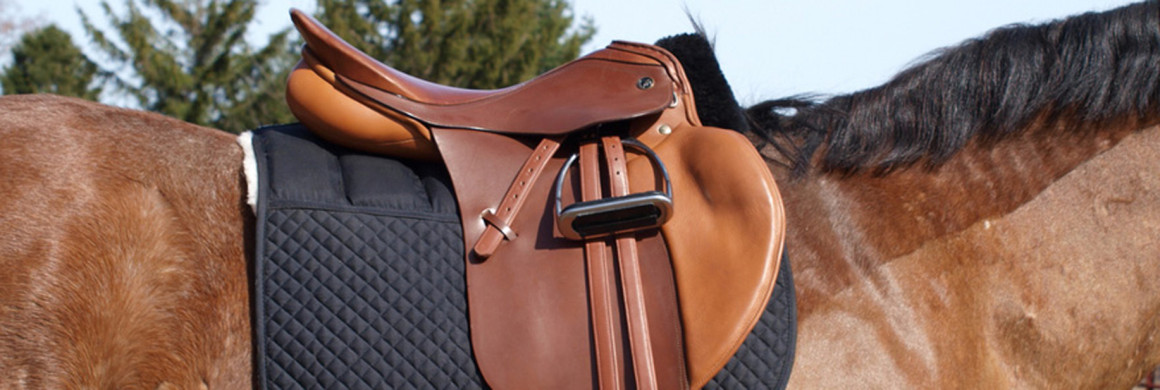In an ideal world, the only thing between your horse and your saddle would be a simple cotton cloth — the better to keep your saddle from getting too sweaty and dirty.
In the real world, no horse is built the same, and no saddle can fit every horse, which makes the vast universe of gel pads, half pads, therapeutic pads, keyhole pads, and every other sort of saddle pad imaginable such a profitable enterprise. It’s a rare tack room that isn’t stocked with at least a dozen different saddle pads. So what’s the best way to choose a saddle pad for your horse, and why are they necessary at all?
That old-school horsemanship ideal of a simple saddle pad isn’t based in some fantasyland, it’s just dating to a time when we didn’t know much about pressure points, toplines, or the way horses change as we develop their muscles and movement. A horse currently learning novice dressage will have a different shape and require a different saddle fit in two years when he’s much more advanced. Custom saddle fitting is an option, of course, and if it’s in your budget, by all means get a saddle-fitter out to your barn. Your horse and your seat will both benefit from the perfect fit. Saddle-fitting can be as simple as adjusting the flocking to match the saddle to your horse’s unique contours.
However, if a custom fit isn’t in the books this year, go for a saddle pad that can fill in where your saddle is lacking.
Take a look at the way your saddle sits on your horse’s back without a pad, and work from there to fill in the gaps.
A slightly asymmetrical fit can be addressed with correction pads. These pads have removable shims so you can customize the lift or cushioning to match your horse’s natural shape.
Horses with chronically sore backs can benefit from a gel pad or a sheepskin pad. These pads fit themselves to a horse’s back and can compensate for slight irregularities of pressure between the saddle and the horse. Both pads are something of an investment with their high price tag, but last longer than foam pads. Sheepskin in particular is building up a name for itself as a therapeutic item.
Wither relief pads have a keyhole slot over the withers to reduce pressure on high-withered horses. A saddle which is just within that three-fingers range of being too close too a horse’s withers might end up pinching the horse with a saddle pad in the mix, so this pad can alleviate that issue in some cases. High-withered horses can also benefit from a high-contoured saddle pad, which is sewn to lift up over the withers instead of lying flat.
Unfortunately, sometimes, a saddle pad can’t compensate for poor fit.


